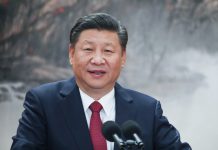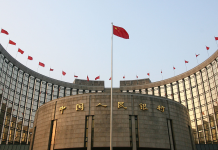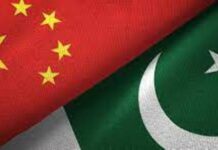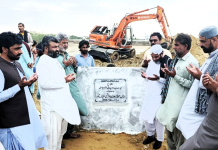Before embarking on her medical mission to Xizang Autonomous Region in southwest China, Lu Songsong, a medical laboratory doctor and mother of two, sought advice from her daughter, who was about to start high school. When her daughter asked, “Mom, is the hospital sending you, or do you want to go there yourself?” Lu responded, “This has always been my wish. I want to see what I can contribute in a new place and help the people of Xizang with what I’ve learned.” Understanding her mother’s intent, her daughter replied, “Then, don’t worry about going to Xizang; I’ll help take good care of my younger brother.”
Lu is a member of an expert team from Peking University People’s Hospital in Beijing who departed for Xizang on the morning of July 31 for a year-long medical support mission, according to a newsletter released by the hospital on the same day. Previously, the hospital had sent 59 experts to the region.
Zhang Guo, a gynecological oncologist and the team leader, had previously visited Nyingchi City to promote gynecological oncology guidelines and was deeply moved by the local doctors’ eagerness to learn. However, due to the lack of specialized gynecological oncologists, many patients missed the best treatment opportunities, the newsletter reported. “I feel it is my responsibility to pass on cutting-edge professional knowledge to more colleagues in need,” Zhang said.
With medical skills as their tools and compassion as their driving force, the seven-member team aims to continue the story of collaborative support in Xizang, letting their deep care for others warm every corner of the plateau, “much like the Sun,” as the newsletter described.
This mission is part of the “group-style” medical assistance program, launched in 2015. Hospitals from different provinces and municipalities paired with Xizang, along with hospitals directly under the National Health Commission, sending doctors for sustained efforts rather than short-term, scattered assistance.
The group-based medical assistance in Xizang has made remarkable progress, according to a white paper on the governance of Xizang in the new era released by the State Council Information Office in November 2023. Local patients can now receive treatment for over 400 serious diseases within the region and more than 2,400 moderate diseases within prefecture-level administrative units. Additionally, minor ailments can be treated at county-level hospitals. The maternal mortality rate decreased to 45.8 per 100,000 in 2022 from 5,000 per 100,000 in the early 1950s, and the infant mortality rate dropped from 430 per thousand to 7 per thousand. During the same period, average life expectancy increased to 72.19 years.
The central authorities decided to provide pairing-up support for Xizang in 1994 at the third national meeting on Xizang. Since 1978, when China started its reform and opening-up push, the Communist Party of China Central Committee has held seven national meetings on Xizang, making major decisions and plans for the region.
Over the past three decades, the Central Government and related provincial authorities have been sending professionals to Xizang through thousands of programs, all boosting the region’s socioeconomic development. The high altitude, low temperatures, low pressure and low oxygen levels make “hardship” an inevitable challenge for working on the plateau. However, batch after batch of people from different regions and industries across the country, who are not afraid of the hardship and endure it, have rooted themselves in Xizang and dedicated their efforts to the snowy plateau. Today, many roads in Xizang are named after other municipalities and provinces such as Lhasa’s Beijing Road and Xigaze’s Shandong Road.

Counterpart support
The pairing-up support scheme is a policy unique to China, designed to channel financial, technical and human resources from developed regions, as well as central departments and state-owned enterprises, to underdeveloped areas. This scheme is widely utilized in a range of targeted initiatives. For example, following the 2008 Sichuan earthquake, China launched a pairing-up support program to accelerate recovery and reconstruction. In this program, each province assisted a specific county or city in Sichuan, with the level of support determined by the economic strength of the assisting province and the extent of the disaster’s impact on the recipient area.
Due to factors such as harsh natural conditions, a weak foundation for development and challenges in aggregating production resources, Xizang, after its peaceful liberation in 1951, lagged behind the national average in economic and social development. In response, the Central Government and the entire nation implemented principles and policies to support Xizang, laying the groundwork for its development and integration with the rest of the country.
“It is a very nice and unique policy in China to encourage the development of underdeveloped regions like Xizang. I saw many buildings in Xizang built with the support of other local governments of China,” Kwon Ki-sik, President of the Korea-China City Friendship Association and a senior professor at the Seoul Media Institute of Technology, told Beijing Review, adding that it is the shortest way and most efficient policy to realize China’s goal of common prosperity. Kwon visited Xizang from May 14 to 20 for the first time and toured the regional capital city of Lhasa and its second largest city of Xigaze.
“I think it’s a very important initiative that shows how China pays attention to the underdeveloped regions. It expresses the importance of the unity of the nation in addressing the challenges of poverty and development by making different departments and state-owned companies part of the solution. It also highlights the importance of the allocation of capable human resources in supporting Xizang’s development and economic activities,” Jose Carlos Feliciano, Deputy Director of the Center for China and Asia-Pacific Studies at Pacific University of Peru, told Beijing Review. He traveled to Xizang in July with a tour agency that arranges eight-day tours, taking visitors to Lhasa, Xigaze and the Mount Qomolangma Base Camp.

Nationwide support for Xizang development has delivered remarkable results, according to the 2023 white paper. Between 1994 and 2022, 11,900 officials and professionals were dispatched in 10 groupings to assist Xizang. Coordination among provinces, cities and state-owned enterprises that assist Xizang has been intensified, and new models have been piloted in coordinated development, industrial cooperation, and management of paired-up assistance. Efforts have been made to coordinate assistance in the forms of financial aid, technical support, poverty alleviation, and facilitation of industrial development and employment, as well as sending professional medical and educational teams.
The model of assistance has changed from one mainly relying on external support, such as providing funds and launching projects, to a self-sustaining model that includes developing industries, offering technical support and nurturing talent. During the 13th Five-Year Plan period (2016-20), 17 provinces and municipalities launched 1,260 projects to assist Xizang, representing a total investment of 20 billion yuan ($2.8 billion), the white paper read.
“Pairing-up support for Xizang reflects the advantages of the socialist system,” Zhang Lan, a researcher with the Contemporary China Research Center at Fudan University in Shanghai, said at an academic seminar on the 30th anniversary of pairing-up support for Xizang in Lhasa on August 14. The vast regional and developmental disparities in China create a national context that necessitates coordinated governance and regional development. The objective realities of natural geographical conditions, developmental foundations and social-cultural factors between Xizang and other provinces and cities highlight the need for a well-designed system to ensure Xizang achieves its goals of economic development, social stability and national unity.
“This collective effort aims to share the burden of economic and social development and governance in the western region, harnessing the advantages of the socialist system to narrow the development gap between Xizang and other provinces and cities, and promote rapid modernization in Xizang,” Zhang said.
Xizang on the rise
From 2012 to 2022, 1.73 trillion yuan ($242.5 billion) in Central Government financial subsidies went to Xizang, according to the white paper. With the financial support, investment in fixed assets increased by a factor of 3.33 times between 2012 and 2022. The investment focused on infrastructure, public services and other fields that could reinforce the foundations of Xizang’s economic development. Many major engineering projects related to long-term development have been set up over time, greatly improving people’s working and living conditions.
Take infrastructure for an example. As of late 2023, the State Grid Corp. of China, a state-owned electric utility corporation, had invested over 80 billion yuan ($11.2 billion) in Xizang and completed a series of key projects in the region. These efforts have enhanced the quality of electrical services. According to the white paper, Xizang has made a historic shift in electrical power, from rationing to surplus output. Now, 96.5 percent of villages have access to three-phase power supply.
The region’s railway network was extended from 701 km in 2012 to 1,359 km in 2022. The Golmud-Lhasa section of the Qinghai-Xizang Railway has been renovated. The Ya’an-Nyingchi section of the Sichuan-Xizang Railway is under construction and the Lhasa-Nyingchi section has entered service. The Fuxing high-speed train series is now operating in Xizang and reaches as far as Lhasa, the white paper said.
“From an economic perspective, the Qinghai-Xizang Railway should not have been built, but the Central Government decided to build the railway for the people’s common prosperity and happiness. As a result, local people now enjoy the transportation revolution and Xizang’s economic growth is better than before,” Kwon said, giving the example that since the opening of the Qinghai-Xizang Railway, the local economy has been undergoing considerable development, with smoother logistics and an increase in tourists. The railway, stretching from Xining in Qinghai Province to Lhasa in Xizang, is the first railway to reach the heart of the region. It holds the title of the world’s highest and longest plateau railway.
“I was impressed by the infrastructure, from airport to highways,” Feliciano said, adding that Lhasa is a modern city with all the infrastructure and facilities that come with it. “On Western social media, Xizang is portrayed as a holy land full of temples and history, however, I think it also combines some modern aspects and resources that help tourism to become an important economic activity,” he added.
With the joint efforts in developing Xizang, local incomes have risen rapidly. According to the white paper, the per-capita disposable income of the region’s residents as a whole rose to 26,675 yuan ($3,740) in 2022 from 8,568 yuan ($1,200) in 2012, representing the country’s highest growth rate for eight consecutive years since 2015. China’s per-capita disposable income stood at 36,883 yuan ($5,487) in 2022.
Kwon said that he didn’t see any of the ethnic conflicts that many Western media outlets have hyped and he was impressed by the respect, harmony and cooperation among Tibetans, Han Chinese and other ethnic groups. “When I visited Lhasa No.8 Middle School, I saw Tibetan and Han students living together and studying the Tibetan language and traditional culture, which made me think that the Chinese Government’s policy of ethnic integration based on favoring ethnic minorities has been very successful,” he said.
“Many Tibetan people are satisfied with the economic growth and development. They are enjoying the best days in their history,” Kwon added. –The Daily Mail-Beijing Review news exchange item






